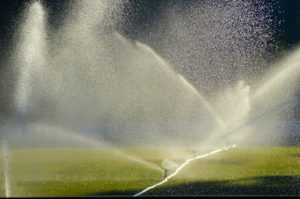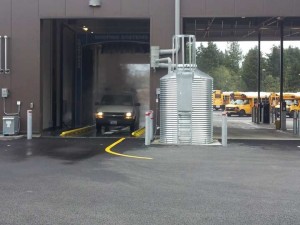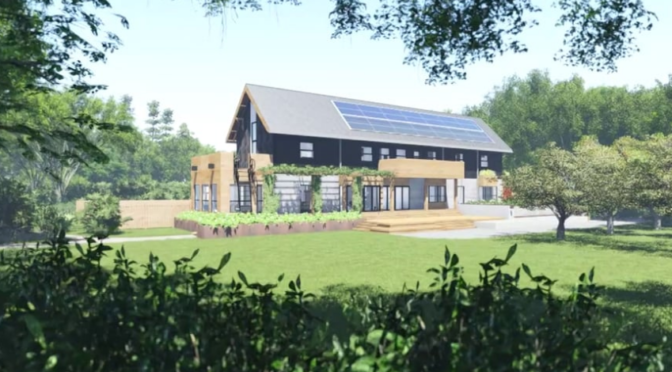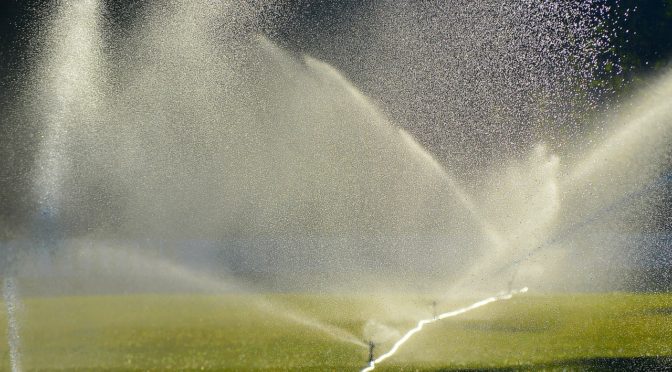 Do you know that the most common use of collected rainwater is not for drinking? Here’s a prior post, which helps answer this question – and explains why non-potable use of rainwater is so popular – and sustainable.
Do you know that the most common use of collected rainwater is not for drinking? Here’s a prior post, which helps answer this question – and explains why non-potable use of rainwater is so popular – and sustainable.
The most common use of rainwater collection is for non-potable use. Irrigation, water features, wash down, toilet, and laundry are all non-potable uses that can have a positive effect on water conservation. A properly designed and installed rainwater collection system will provide enough water to support these desired uses with less impact on our water supply.
Rainwater is essentially free of pollution, so it can be stored without much more than screening. Storage can be underground, above ground, metal, plastic, or fiberglass. If irrigation is the desired use, keep in mind that approximately .623 gallons per sq ft of planting, per week is required for the healthy growth of plants, therefore storage volumes can be a concern in design due to space and costs. Conveyance can be gravity if there is enough head. Head is .4 lbs per foot of elevation. A pressure pump might be necessary to achieve the desired pressure needed. Sediment filtration for a simple irrigation system should be all that is needed to ensure emitters and soaker hoses perform as expected.
Water features such as fountains can recirculate the water being used, so very little storage would be required. Sediment and carbon filtration would be needed to keep pumps and nozzles working properly. A carbon filter would be helpful to keep odor to a minimum.
 Wash down facilities can use rainwater collection and save money on their water bills by using rainwater collection as the rinse water. With enough storage, a large fleet can be washed with recycled wash water and rinsed with collected rainwater. Again, sediment and carbon filtration would be the only filtration needed. Wash down of equipment, whether construction or farming, can benefit from rainwater collection.
Wash down facilities can use rainwater collection and save money on their water bills by using rainwater collection as the rinse water. With enough storage, a large fleet can be washed with recycled wash water and rinsed with collected rainwater. Again, sediment and carbon filtration would be the only filtration needed. Wash down of equipment, whether construction or farming, can benefit from rainwater collection.
Toilet and laundry facilities for residential and commercial applications are becoming more popular with new construction. Rather than infiltration, which is mandated, why not use that water. Simple pumping and filtration of stored water is all the treatment needed. A return on investment can be achieved within a few years.
There are a wide range of uses for rainwater collection. With a little bit of imagination, you might come up with a use for rainwater collection that could save you money.
So, the next time you think collecting rainwater for drinking purposes is most common, think again – there are many more uses that are beneficial and sustainable.
 RainBank Rainwater Systems was pleased to work with 2020 Engineering and Jason McLennan on Heron Hall’s rainwater collection system.
RainBank Rainwater Systems was pleased to work with 2020 Engineering and Jason McLennan on Heron Hall’s rainwater collection system.


 Do you know that the most common use of collected rainwater is not for drinking? Here’s a
Do you know that the most common use of collected rainwater is not for drinking? Here’s a  Wash down facilities can use rainwater collection and save money on their water bills by using rainwater collection as the rinse water. With enough storage, a large fleet can be washed with recycled wash water and rinsed with collected rainwater. Again, sediment and carbon filtration would be the only filtration needed. Wash down of equipment, whether construction or farming, can benefit from rainwater collection.
Wash down facilities can use rainwater collection and save money on their water bills by using rainwater collection as the rinse water. With enough storage, a large fleet can be washed with recycled wash water and rinsed with collected rainwater. Again, sediment and carbon filtration would be the only filtration needed. Wash down of equipment, whether construction or farming, can benefit from rainwater collection.
 According to some predictions, this winter the Seattle area will continue with warmer than typical temperatures. Essentially we could have a repeat of last winter with not much snowpack towards the end of winter. The good news is – we are getting above average of rainfall this December and the trend is expected to follow throughout the winter.
According to some predictions, this winter the Seattle area will continue with warmer than typical temperatures. Essentially we could have a repeat of last winter with not much snowpack towards the end of winter. The good news is – we are getting above average of rainfall this December and the trend is expected to follow throughout the winter. We stand a good chance of seeing a lot of the snow pack disappear before early spring, which puts us in a possible drought condition again next summer.
We stand a good chance of seeing a lot of the snow pack disappear before early spring, which puts us in a possible drought condition again next summer. Most of our designed/installed systems in the Seattle area are supplemental to city water, allowing storage of the collected rain for those times when most needed.
Most of our designed/installed systems in the Seattle area are supplemental to city water, allowing storage of the collected rain for those times when most needed.